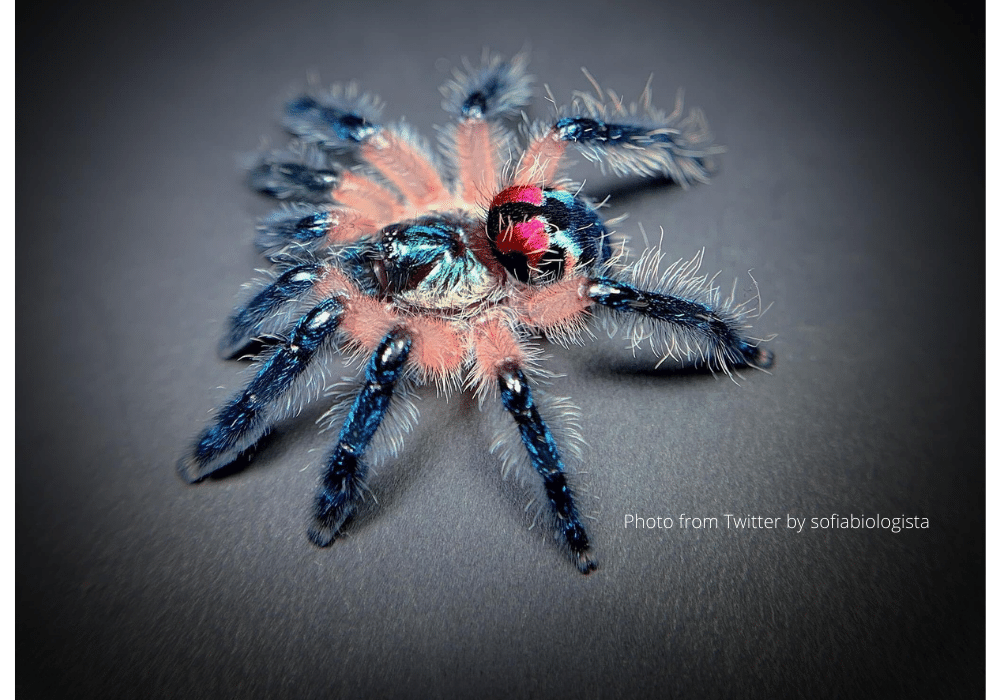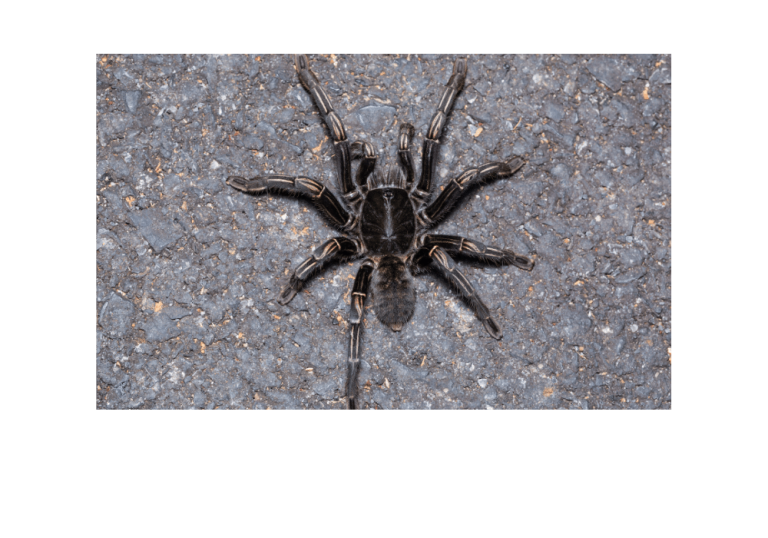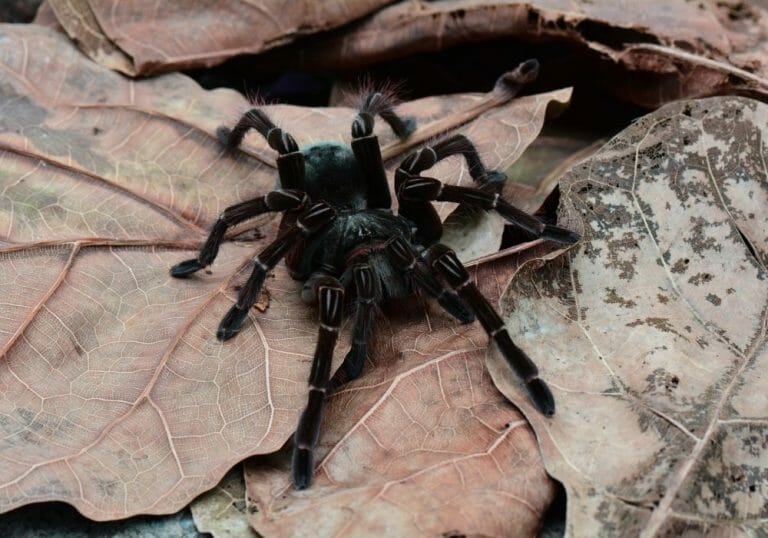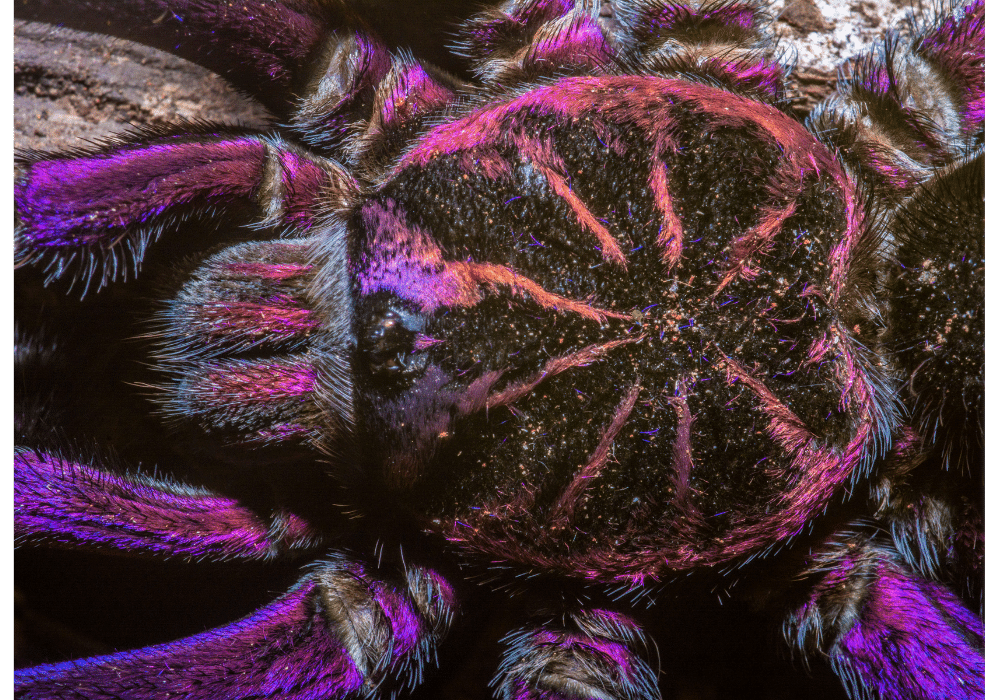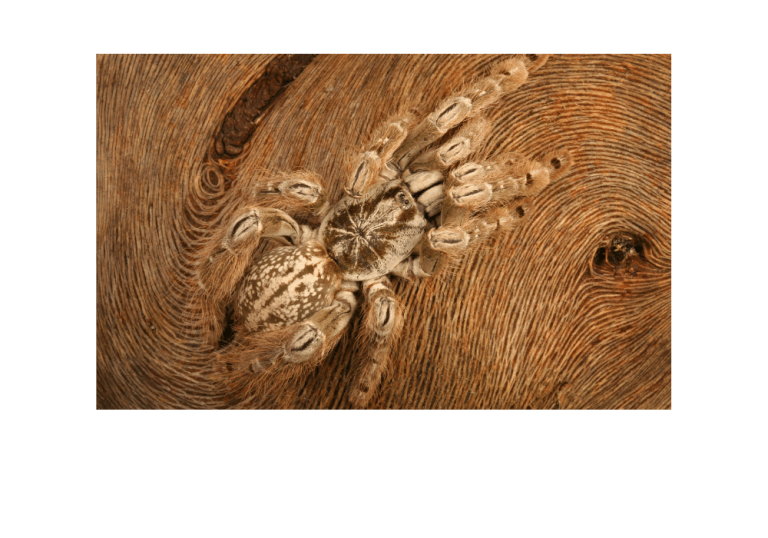Brazilian Jewel Tarantula (Everything You Need To Know)
There are approximately 800 species of tarantulas; however, some are more attractive and interesting than others.
The Brazilian Jewel tarantula is one of those that distinguishes itself from the others.
The vibrant colors and moderate temperament make it an excellent choice for a tranquil spider pet.
Beautiful Tarantulas for Pets
Brazilian Jewel Tarantulas – also known as Candy Shop Spiders and Jeweled Pink Toes – can be kept in captivity and thus are docile. They also make excellent pets when properly cared for and given space. In certain places, it is illegal to keep them in captivity.
Scientific Classification
Typhochlaena Caledonia is the scientific name for the Brazilian Jewel tarantula. Colorful tarantulas like this are incredibly rare, and their name comes from their vibrant appearance.
Sergipe and Babia rainforests in Brazil are their natural habitat.
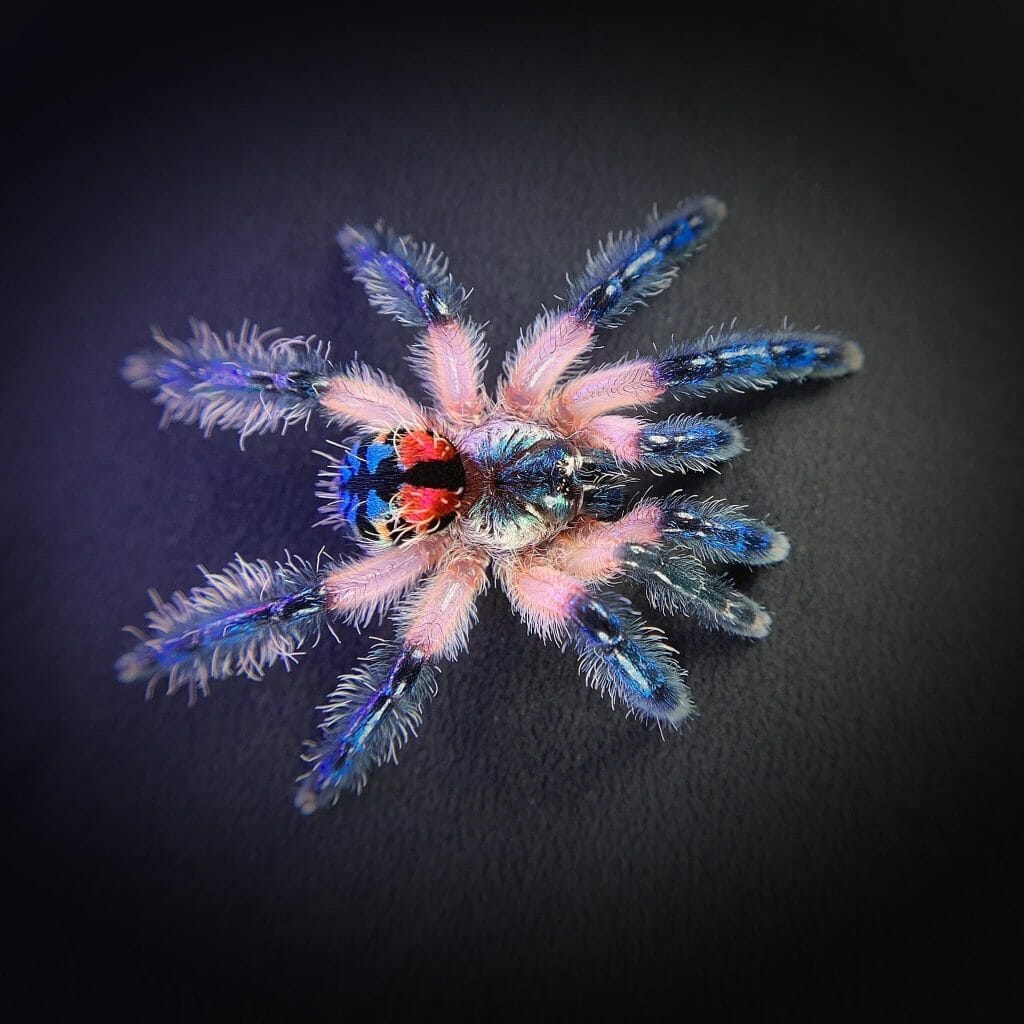
Appearance
Brazilian Jewels are considered the most vibrant and gorgeous new world tarantulas, making them a popular option among hobbyists.
While this tarantula possesses several incredible features, its colorful appearance is undoubtedly the reason for its popularity and demand among fans. Its body is colored in various shades, including pink, blue, yellow, black, and red. In addition, this tarantula’s bulbous abdomen, paired with its brilliant colors, makes it incredibly beautiful.
This size enables T. Caledonia to show several unique features. However, the species’ small size makes it difficult to see in both nature and captivity.
Size
The Brazilian Jewel is a remarkably small tarantula compared to other tarantula species. Indeed, it is classified as a dwarf tarantula species.
While some tarantulas, like the Cobalt Blue, have legs that can reach up to 6 inches long. Female Candy Shop tarantulas have a leg spread of 2.5 inches, while males have a leg span of 2 inches.
A tiny abdomen and little legs distinguish the male T. Caledonia.
T. Caledonia grows slowly compared to the growth rates of many other tarantula species. This explains why, even as adults, their bodies are so small. Nonetheless, their small size allows them to develop into adults quickly.
Habitat
The Candy Shop Spider is found in its native environment on the barks of Brazilian rainforest trees. However, raising the species as a pet in captivity is possible.
As with most New World tarantulas, T. Caledonia does not spin webs and instead uses trapdoor-making mechanisms to capture prey.
The Brazilian Jewel spiders that dwell in trees and tunnels are known for their intricate webs, which they use to catch their prey.
Some countries don’t allow people to keep Brazilian Jewels in captivity or collect them as a hobby.
Before keeping this critter as a pet, check your country’s laws on domesticated exotic wild animals.
Housing
The Brazilian Jewel is a tough tarantula to keep since it requires special care and attention to maintain its health. Its natural trapdoor-making habit must be allowed within its enclosure.
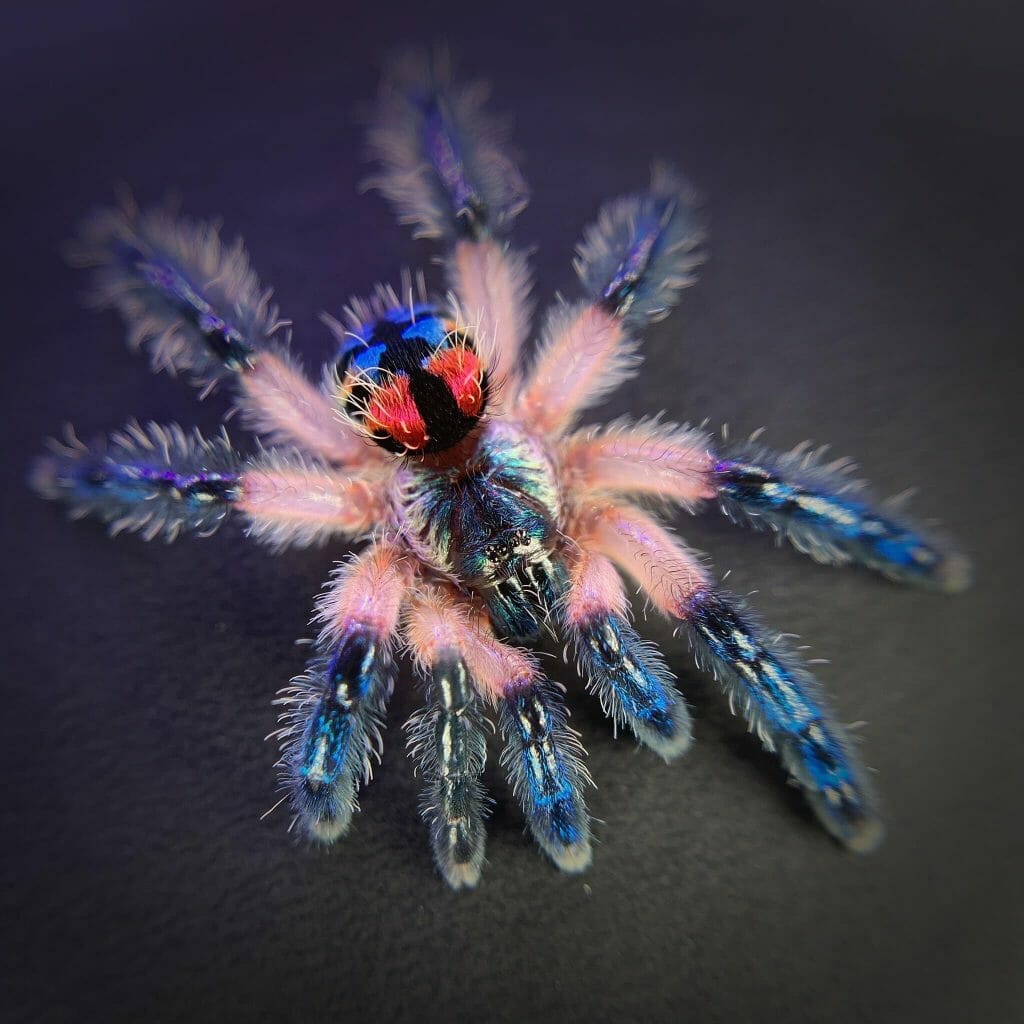
Fortunately, putting a little attention into the enclosure’s construction should result in a healthier environment.
The Exo Terra 8′′ x 8′′ x 12′′ terrarium is ideal for this tiny species. It has sufficient floor space to move around on the ground and maximum height to make a tree-like environment.
Arboreal Species
This is an arboreal species that lives in trees. A thin body and lengthy legs allow it to thrive in this environment.
As part of the arboreal adaption, these giant tarantulas have flattened legs and dense hair on the tarsi and metatarsi, their legs’ last two segments.
Their legs’ high surface area enables them to scale surfaces effortlessly and collect the resources required to develop their trap doors.
The Jewel Toe tarantula’s small size and light weight let it run faster and prevent injuries if it falls.
Brazilian Jewels thrive on the bark and leaves of trees. Some grow in low vegetation such as bushes and tall grasses. Several insects and birds use tree hollows to hide from predators.
Temperament
Brazilian Jewels have a calm and pleasant demeanor, making them an ideal pet if you don’t mind their docility.
When threatened, the species will crawl below its trapdoor rather than fight.
Unlike the other species that rely on hair flicking for defense, this Brazilian Jewel tarantula does not flick hair in response to urticating inches. Additionally, it is rarely vexing.
Although it is a calm and friendly species, it is not advised for beginners. It is best to avoid handling this spider unless supervised by a more skilled hobbyist.
Defense Mechanism
The Brazilian Jewel tarantula’s central defense mechanism is its urticating hairs.
These spiders do not often have venomous bites, yet, their tastes can be highly unpleasant.
This species would prefer to return to its burrow or conceal itself beneath its trapdoor than combat a transgressor.
However, when confronted with a persistent attack, the T. Caledonia will defend itself with its urticating hairs. In humans, the strands can induce numbness and discomfort.
This species rarely engages in hair flicking attacks. However, when a tarantula feels trapped and unable to flee, it may execute a vicious attack.
While flicking its hairs, the Brazilian Jewel tarantula will develop a bald spot around the area of its abdomen where the inches were released.
Trap Door Species
Tarantulas are trap door species. As part of its hunting tactics, it is well-known for constructing camouflaged trapdoors.
The tarantula will use small parts of organic stuff such as leaves and barks to build the door. Their next step is making an elaborate entrance out of the tree’s bark.
The tarantula hides behind the trap door, waiting for its target prey to pass by. Aside from living in trees, tarantulas can live near the ground if food is readily available.
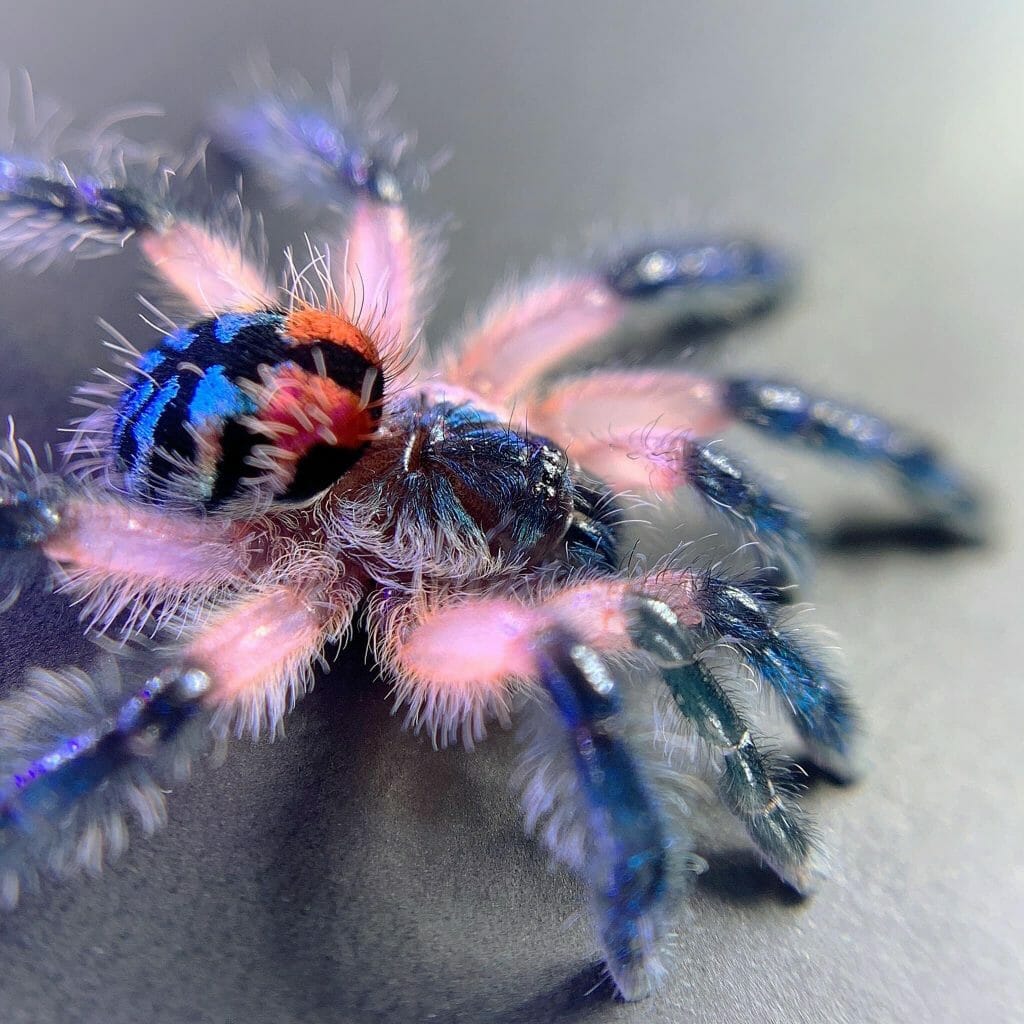
The prey of the Brazilian Jewel is captured in a trap made of Jewel’s silk. Behind the trapdoor, the tarantula sets up its silk trap and waits for any unsuspecting prey to enter.
Once the giant spider has captured its prey, it rushes behind the trapdoor, where it feasts gradually on its catch.
In captivity, Caledonia also builds trapdoors that it uses to disguise itself. Most of the time, the docile tarantula hides below the trapdoor and only emerges to eat when it senses a threat.
Enclosure Decorations
While the Brazilian Jewel is a gorgeous tarantula species, it may not be the best choice for display.
While this tarantula is less aggressive in captivity, its gentle nature takes the focus away from its desirability as a pet.
The enclosure’s inside must allow for Typhochlaena Caledonia’s signature trapdoors. This is accomplished mainly by using a huge cork bark hide and taking up substantial space in the enclosure.
Select a hide with numerous natural holes and divots in which the tarantula can hide. Because most coats cannot be stripped apart with tree trunks, one must also add some sphagnum mosses and shaved cork bark at the vertical hide’s base.
Typhochlaena Caledonia can use webbing to shape these scraps into a helpful trapdoor.
Along with this hide, a fake plant, a water dish, and a coat should be included in the enclosure.
Temperatures typically range between 65°F to 85°F, with considerable rainfall in the spring and summer.
Typhochlaena Caledonia prefers temperatures between 78°F to 82°F, close to room temperature for most people.
Diet
This species is a reasonably voracious eater. Unfortunately, Typhochlaena Caledonia doesn’t have excellent hunting skills, so it relies on the element of surprise to get its prey.
It lacks advanced hunting abilities and instead relies on ambushing its food when they reach the tarantula’s trap door close enough.
Its primary food source is tiny crickets and fruit flies. Therefore, this tarantula should be kept away from large prey that could harm the tarantula in captivity.
As far as feeding frequency is concerned, a little cricket should be fed 2-3 times a week. But, of course, as with any pet, the amount of food you give your tarantula will depend on its individual needs.
This species has to be fed twice a week in captivity to survive.
Digestive System
The Brazilian Jewel’s mouth is below the chelicerae on the prosoma’s front lower section.
The tarantula’s mouth is small and only meant to suck, keeping with its small size. Consequently, the prey must be dissolved before the giant spider may begin devouring it.
Tarantulas are known to crush and predigest chunky meals in the wild to make digestion easier.
Spritzing the prey with chelicerae secretions helps the tarantula digest its prey in captivity.
The stomach of a tarantula extends the full length of the arachnid’s body. The sucking stomach is a tube that widens in the prosoma.
When the sucking stomach’s muscles contract, the abdomen expands in size. This movement results in a highly developed sucking mechanism, enabling the tarantula to consume its liquid and semi prey.
When food passes the intestines, the normal assimilation and distribution processes begin. Food is then absorbed into the bloodstream via the gut walls.
Health Concerns
Tarantulas kept in captivity do not have many health problems as they are fed adequately, and the enclosures are maintained appropriately. Dehydration and mites are the most common issues that pet tarantulas encounter, but both are easily avoided and treated.
Even in captivity, the species can stay out its entire life as long as the environment in its enclosure is healthy.
Typhochlaena Caledonia cannot hunt appropriately unless it can build trapdoors. In extreme circumstances, this can lead to starvation and death. As a result, its enclosure must be designed to the best standard.
Additionally, as this species requires greater humidity, it is critical to adequately ventilate the enclosure. Swampy circumstances are harmful to their health.
Setae
The Candy Shop tarantula, like the majority of New World tarantulas, is covered with long and short hairs called setae.
In contrast to other tarantula species, this one seems smooth and streamlined because of its hair coverings. This adds to the Brazilian Jewel’s attractiveness.
Male T. Caledonia has many longer setae than female T. Caledonia.
Molting
As part of its growing process, the tarantula sheds its exoskeleton. Molting is the term used to describe the process of shedding.
T. Caledonia juveniles might molt multiple times a year due to their rapid growth. However, once they reach maturity, molting occurs only once a year.
This New World species develops urticating hairs throughout each molt. During the molting process, the huge spider stops eating and becomes lethargic.
Optimal Environmental Conditions
Between 70 and 85 percent humidity is ideal for keeping the Brazilian Jewel tarantula. In captivity, the air should be adequately well-ventilated in the enclosure.
This tarantula thrives in temperatures ranging from 26 to 30 degrees Celsius in the summer to 20 to 24 degrees Celsius in the winter.
Sale & Price
If you want to keep this tarantula in your enclosure, be prepared to spend a lot of money. The available quantity is extremely limited because it’s a recently bred, exceedingly rare species. As a result, it is one of the most costly tarantulas available.
More often than not, these tiny, quarter-inch spiderlings are sold for roughly $600 each. Adult males cost slightly more, while females cost close to $1000 for each specimen. Typhochlaena Caledonia is hence inaccessible to the majority of individuals.
Even yet, if you’re a die-hard enthusiast of the tarantula, it might be worth it. In addition to its beauty, this species is rare enough for collectors to consider it a grail.
Reproduction
A mature male species that wants to mate will first rub the abdominal muscles on the ground to release semen.
Shorter leg appendages are then dipped into the semen by the species. This semen will be stored in the appendages until a suitable female can be found, also known as “pedipalps.”
As soon as a male and a female make contact and exchange signals, it is clear that they belong to the same species.
Male Brazilian Jewel puts semen-soaked pedipalps into the pouch on the female’s abdomen.
Typically, the male travels immediately after the process is done. However, rarely do female T. Caledonia consumes their male partners.
Females can lay 2000 eggs. They do this in a silk sack, which they keep protected for 6-7 weeks.
The juvenile Brazilian Jewel will remain in the nest for an extended period. After that, the young ones will consume the remains of the yolk sac before dispersion and becoming independent.
Related Posts
- Thailand Black Tarantula (Everything You Need To Know)
- Thai Tiger Tarantula (Everything You Need To Know)
- Feather Leg Baboon Tarantula (Everything You Need To Know)
- Blue Baboon Tarantula (Everything You Need To Know)
- Trinidad Olive Tarantula – All Facts
- Purple Bloom Tarantula – All Facts
- Brazilian Jewel Tarantula (All Facts You Need To Know)
- Mink Vs. Ferret – All You Need To Know
- Why Do Cats Put Their Butt In Your Face?
- Why Does Your Hamster Smell? (Great Tips To Smell Better)
